Preposition Definition and Examples
Introduction
Prepositions are an important part of the English language and play a crucial role in expressing the relationship between words in a sentence. They provide essential information about an action or event's direction, location, and time.
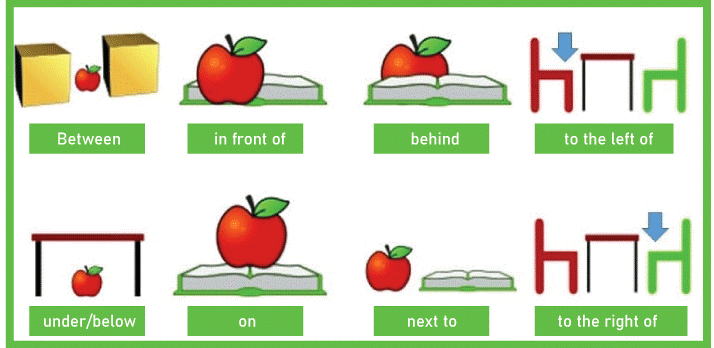
Preposition Definition
A preposition is a word that shows the relationship between a noun or pronoun and other words in a sentence. It shows the position of a noun or pronoun in space, time, or direction. Prepositions typically come before the noun or pronoun and show how they relate to other sentence elements.
Here are some examples of prepositions and their usage:
- in - in a building, in the sky
- on - on the wall, on the top of the mountain
- at - at the party, at the bus stop
- by - by the lake, by myself
- with - with my friends, with a smile
- to - to the store, to school
- from - from my home, from the airport
- of - a piece of cake, the name of the book
- for - for you, for all time
- about - about the movie, about the weather
- over - over the river, over the edge
- through - through the forest, through the mail
- between - between the buildings, between you and me
- among - among the flowers, among the people
- behind - behind the building, behind the times
- under - under the bed, under the sea
- above - above the clouds, above average
- near - near the house, near the river
- next - the man next to you, call the next patient
- across - across the street, across the hallways
Overall, prepositions play a crucial role in English grammar and are essential for expressing relationships between words and phrases in a sentence.
Types of Preposition
Preposition has only two main types, which are:-
- Simple preposition
- Compound preposition
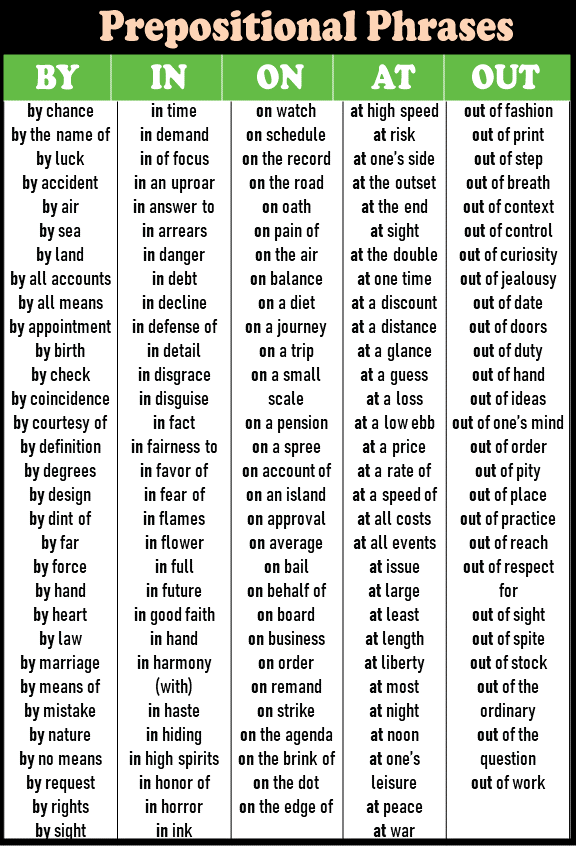
1. Simple preposition
As discussed, prepositions indicate the relationship between a noun or pronoun and other words in a sentence. Simple prepositions are the most commonly used prepositions in the English language, and they are called "simple" because they consist of only one word.
Word bank:
By Next Through Without
In Upon Beside Inside
Of Than Against Between
To Down Around Until
Off Over Before Among
Out Near Below For
Till Amid Outside While
Onto With Following At
Into Past Except Across
Like Round During Towards
Here are some examples of the use of simple prepositions:
- In: Used to show a location or position within a space, such as a room, building, or city. Example: She is in the kitchen.
- On: Used to show a surface, location, or position touching or directly above something. Example: The book is on the table.
- At: Used to show a location or position, typically a specific place. Example: They are at the beach.
- By: Used to show proximity or a location close to something. Example: The park is by the river.
- Of: Used to show possession or a relationship between two things. Example: The hat of the clown.
- With: Used to show an action performed with someone or something. Example: He is playing with his friends.
- From: Used to show a starting point or origin. Example: The journey begins from the airport.
- To: Used to show direction or movement towards a place or person. Example: She is going to the store.
- Through: Used to show movement or action that goes through space. Example: She walks through the park.
- Between: Used to show a location or relationship between two things. Example: The city is located between the mountains.
These are just a few examples of simple prepositions. They are an important part of the English language, helping us to convey relationships between words and phrases in a sentence. By using simple prepositions correctly, we can make our writing clearer and more precise.
2. Compound preposition
A compound preposition is a phrase made up of two or more words that work together as a single preposition. This preposition shows the relationship between a noun or pronoun and another word in a sentence.
Word bank:
As a result of At the top of
Away from By means of
As far as By means of
Away from Close to
For the sake of In case of
Due to Except for
For fear of In accordance with
In comparison to In favour of
In a consequence of In course of
In contrast to In front of
In keeping with In place of
In the hope of In spite of
Such as So far as
As well as Together with
Rather than Out of
On behalf of In sight of
In view of On account of
With respect of
Here are some examples of compound prepositions:
- According to - Indicates the source of information or opinion. Example: According to the weather forecast, it's going to rain tomorrow.
- As of - Indicates a point in time Example: I will have been working at this company for five years as of next month.
- Because of - Indicates the reason for something Example: She couldn't come to the party because of a family emergency.
- In addition to - Indicates an additional item or idea Example: In addition to her regular job, she volunteers at the animal shelter on weekends.
- In front of - Indicates location with something else. Example: The car was parked in front of the house.
- On behalf of - Indicates acting in place of someone else. Example: The lawyer spoke on behalf of her client in court.
- In spite of - Indicates something contrary to expectations or circumstances. Example: In spite of the rain, we still managed to have a good time at the outdoor concert.
- Due to - Indicates the cause of something Example: The flight was delayed due to bad weather.
- Along with - Indicates something that is accompanying something else. Example: She brought her dog along with her to the park.
- Except for - Indicates something that is excluded from a group or category Example: Everyone in the class passed the exam except for John.
In conclusion, compound prepositions are useful for expressing complex ideas in a sentence. They add depth and precision to your writing and allow you to convey more nuanced meanings.
Further Classifications of Simple and Compound Preposition
Simple prepositions and compound prepositions can be classified in various ways:-
- Preposition of time
- Preposition of movement/direction
- Preposition of place
- Participle preposition
- Disguised preposition
- Detached preposition
- Double preposition
- Phrasal prepositions
- Appropriate prepositions
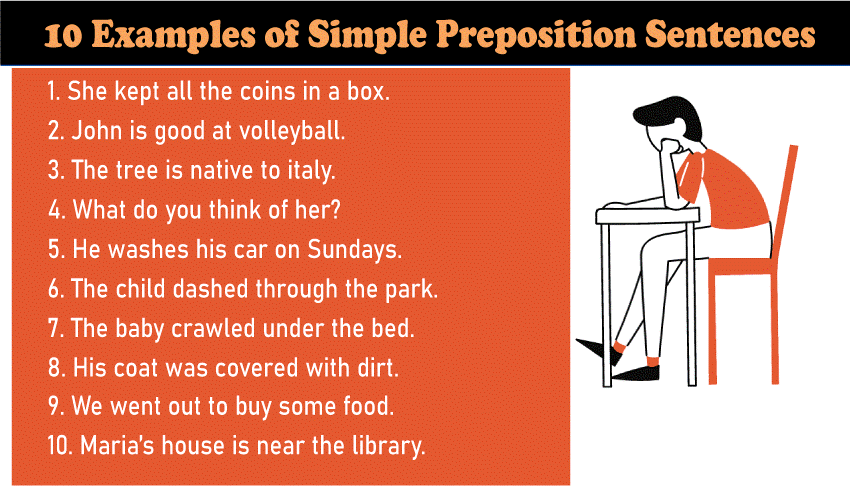
1. Preposition of time
Prepositions of time refer to words that describe the relationship between a noun and time. These prepositions indicate when, for how long, or often an event or action occurs.
Here are some examples:
- At: Used to specify a specific time Example: I will meet you at 7 PM.
- On: Used to specify a particular day or date Example: I will visit my grandparents on Sunday.
- In: Used to specify a longer period, such as months, years, or seasons. Example: I will go on vacation in the summer.
- During: Used to indicate that something occurs while an event occurs. Example: During the game, I will be cheering for my team.
- By: Used to indicate a deadline or completion time Example: I need to finish this project by Friday.
- Before: Used to indicate that something will happen earlier than a specified time. Example: I will finish my work before lunchtime.
- After: Used to indicate that something will happen later than a specified time. Example: I will go shopping after work.
- Within: Used to indicate that something will happen within a specified period. Example: I will complete this task within the next hour.
In conclusion, prepositions of time are an important aspect of the English language that helps us understand the relationship between a noun and time. Understanding the use of these prepositions can help you effectively communicate your ideas and thoughts.
2. Preposition of movement/Location
Prepositions of the movement describe the direction of movement or action of the subject in a sentence. These prepositions show the relationship between the subject and the location or where the movement occurs.
For example:
- to (going towards a place)
- from (coming from a place)
- through (passing through a place)
- into (going inside a place)
- onto (going onto a surface)
- out of (coming out from a place)
- across (moving across a surface)
- over (going over a surface)
- under (going under a surface)
Here are some more examples:
- Across: This preposition is used when a person or object moves across a surface or area. Example: She walked across the room.
- Along: This preposition is used when a person or object moves along a path or road. Example: We drove along the coastline.
- Around: This preposition is used when a person or object moves in a circular path or travels around an object. Example: She walked around the lake.
- Over: This preposition is used when a person or object moves over a surface, such as a bridge or a mountain. Example: The plane flew over the city.
- Through: This preposition is used when a person or object moves from one side of an object to the other. Example: She ran through the forest.
- To: This preposition is used when a person or object moves toward a specific location. Example: She walked to the store.
- Toward: This preposition is used when a person or object moves in the direction of a specific location. Example: He walked toward the sun.
- Up: This preposition is used when a person or object moves upward, such as climbing a mountain or ascending a staircase. Example: She climbed up the staircase.
- Down: This preposition is used when a person or object moves downward, such as descending a staircase or a mountain. Example: He walked down the street.
- Out: This preposition is used when a person or object moves out of a building or place. Example: She walked out of the office.
In conclusion, prepositions of movement show the direction or location of movement. They are crucial for creating clear and concise sentences.
3. Preposition of place
It shows the relationship between a noun or pronoun and other elements in a sentence. Some common prepositions of the place include "in," "on," "at," "by," "near," "above," and "below."
For example:
- "The book is on the table." - In this sentence, the preposition "on" shows the book's location relative to the table.
- "She is sitting in the chair." - In this sentence, the preposition "in" shows that the person is inside the chair.
- "The store is at the corner of the street." - In this sentence, the preposition "at" shows the store's exact location.
- "He is standing by the door." - In this sentence, the preposition "by" shows proximity to the door.
- "The bird is flying near the tree." - In this sentence, the preposition "near" shows the bird's proximity to the tree.
- "The two buildings are separated by a river." - In this sentence, the preposition "by" shows the relationship between the two buildings and the river.
- "The children are playing among the flowers." - In this sentence, the preposition "among" shows that flowers surround the children.
- "The cat is hiding behind the curtains." - In this sentence, the preposition "behind" shows the cat's location relative to the curtains.
- "The man is walking in front of the car." - In this sentence, the preposition "in front of" shows the man's location relative to the car.
- "The cup is beside the plate." - In this sentence, the preposition "beside" shows the proximity of the cup to the plate.
In summary, prepositions of the place play an important role in expressing the location or position of objects, people, or ideas in a sentence.
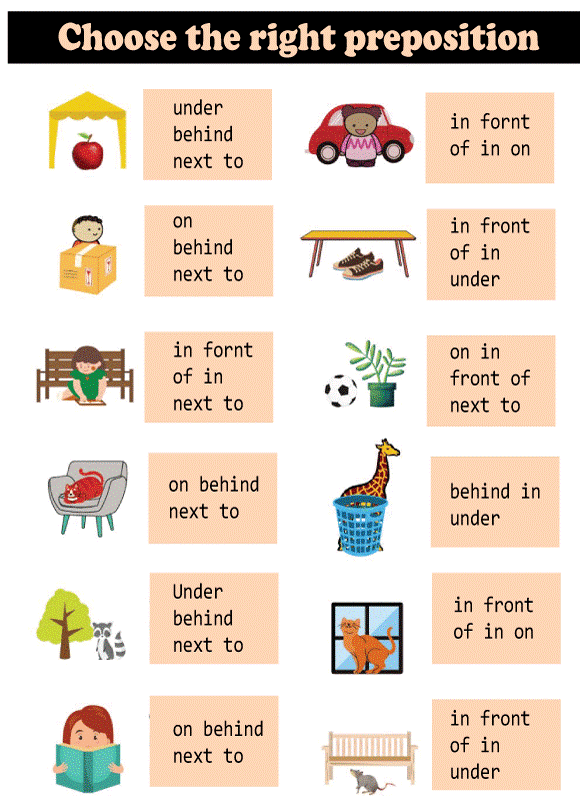
4. Participle preposition
A participle preposition is a verbal phrase that functions as a preposition but is formed from a participle (verb form) instead of an ordinary preposition. Participle prepositions show the relationship between a noun or pronoun and the rest of the sentence.
For example:
- After eating his breakfast, John went for a walk. Here, "after eating" is a participle preposition showing John's relationship with his breakfast.
- On seeing the scene, the audience burst into applause. Here, "on seeing" is a participle preposition that shows the relationship between the audience and the scene.
- Without knowing the answer, she asked the teacher. Here, "without knowing" is a participle preposition that shows the relationship between "she" and the answer.
- With his eyes closed, he dreamed of his future. Here, "with his eyes closed" is a participle preposition that shows the relationship between "he" and his future.
- By running fast, he reached the finish line. Here, "by running fast" is a participle preposition that shows the relationship between "he" and the finish line.
In all of these examples, the participle preposition is used to show the relationship between the noun or pronoun and the rest of the sentence. This makes it an effective way to add more detail and information to a sentence.
5. Disguised preposition
A disguised preposition is a word that looks like another part of speech but functions as a preposition. It is a proposition disguised as another word class, such as an adverb, noun, adjective, or verb.
The following are some common examples of disguised prepositions, along with their explanations:
- Verb + preposition - In this case, the preposition is disguised as a verb. For example, "I'm thinking about you," "I'm looking for my keys."
- Noun + preposition - In this case, the preposition is disguised as a noun. For example, "The reason for this is unclear," "There's a chance of rain."
- Adjective + preposition - In this case, the preposition is disguised as an adjective. For example, "I'm concerned about you," "She's angry with me."
- Adverb + preposition - In this case, the preposition is disguised as an adverb. For example, "I'll come with you," or "I'll stay for dinner."
These disguised prepositions can be tricky because they often appear in idiomatic expressions and phrasal verbs, making them difficult to spot. However, it's important to recognize these words and their function in a sentence, as they often determine the sentence's meaning.
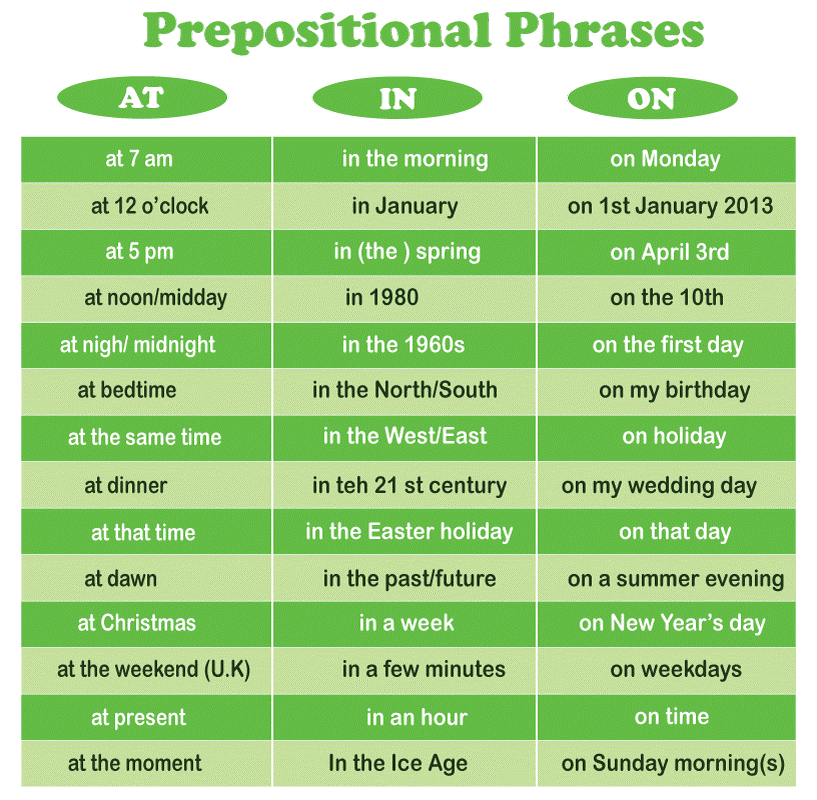
5. Detached preposition
A detached preposition is a preposition that appears at the end of a sentence rather than immediately preceding the noun or pronoun it is meant to modify. In other words, it is a proposition separated from its object.
For example, consider the following sentence
- Who did you give the book to?
- She's the woman I was talking to.
- He's the kind of person I can't put up with.
- I Have a lot of work to do, but I'm not sure when I'll get to it.
- We couldn't decide on a restaurant to go to, so we ended up eating at home.
As mentioned earlier, "detached prepositions" are generally considered non-standard in formal writing. If you are writing formally, it is best to avoid them and keep the preposition directly before its object.
6. Double preposition
A double preposition is when two prepositions appear consecutively in a sentence, and it is a prepositional phrase containing two prepositions. The purpose of the double preposition is to emphasize the relationship between two objects or to add more detail to the sentence.
Examples of Double Preposition:
- In spite of - In spite of the rain, we still went for a walk.
- By means of - He was able to finish the project by means of his computer skills.
- On behalf of - She accepted the award on behalf of her team.
- Due to - The delay was due to bad weather.
- According to - According to the news, there will be a storm tonight.
- In addition to - In addition to the cake, we also had ice cream.
- In front of - The car is parked in front of the building.
- At the end of - At the end of the movie, everyone clapped.
- Apart from - Apart from the book, she also gave me a pen.
- Along with - Along with his guitar, he brought his amplifier.
Double prepositions are commonly used in English, adding richness and depth to the language. They are a great way to emphasize relationships and add more detail to a sentence.
7. Phrasal prepositions
Phrasal prepositions are commonly used in English, especially in spoken and informal communication. Phrasal prepositions are combinations of two or more words that act as a single preposition. These combinations usually consist of a verb, a preposition, and an adverb.
Here are some examples of phrasal prepositions with their meanings:
- According to - This phrase indicates something is based on information from a particular source. For example: "According to the weather forecast, it's going to rain today."
- In addition to - This phrase is used to add more information to something that has already been said. For example: "In addition to his job, he also volunteers at the local animal shelter."
- In front of - This phrase indicates the position of something relative to another object or person. For example: "The car is parked in front of the building."
- On top of - This phrase is used to indicate the position of one object relative to another object. For example: "The book is on top of the desk."
- Apart from - This phrase indicates that something is excluded from a group or category. For example: "Apart from John, everyone else is going to the party."
- Due to - This phrase is used to indicate the cause of something. For example: "The game was canceled due to bad weather."
- With regard to - This phrase is used to indicate the topic or subject of a discussion. For example: "With regard to the budget, we need to make some changes."
- In spite of - This phrase is used to indicate that something happens despite an obstacle or difficulty. For example: "In spite of the rain, the concert still went ahead."
Overall, phrasal prepositions are a common and important part of English grammar. Knowing their meanings and how to use them correctly can help you communicate more effectively in written and spoken English.
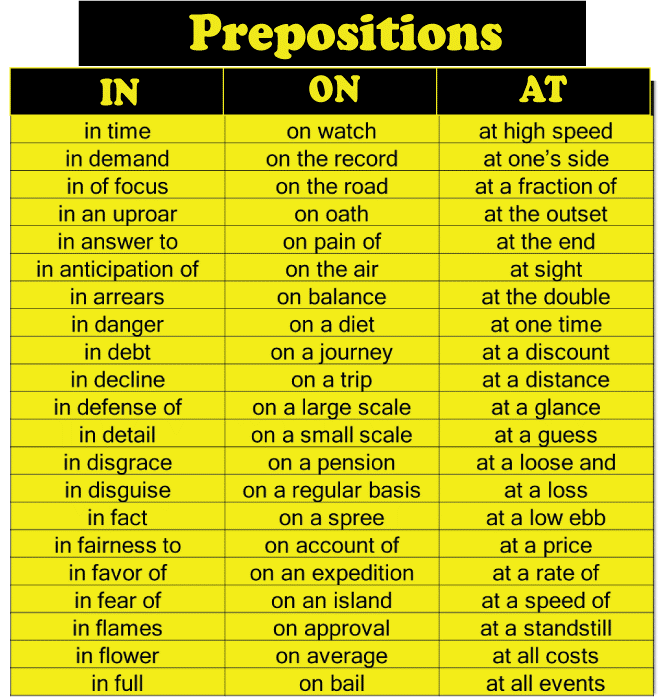
9. Appropriate preposition
A preposition is a word that comes before a noun or pronoun to indicate how those words relate to other words in the phrase. Occasionally, specific prepositions come after specific verbs, nouns, and adjectives, known as appropriate prepositions.
Here are some examples of appropriate prepositions:
- Interested in - This preposition indicates that someone is attracted to something or someone. For example: "I'm interested in learning a new language."
- Accustomed to - This preposition indicates that someone is used to doing or experiencing something. For example: "I'm accustomed to waking up early in the morning."
- Concerned about - This preposition indicates that someone is worried or anxious about something. For example: "I'm concerned about my son's grades."
- Capable of - This preposition indicates that someone can do something. For example: "I'm capable of handling this project independently."
- Consistent with - This preposition indicates that something is in agreement or harmony with something else. For example: "The results are consistent with the theory."
- Dependent on - This preposition is used to indicate that something relies on something else. For example: "Our business is dependent on our customers."
- Different from - This preposition indicates that two things are not the same. For example: "My opinion is different from yours."
- Similar to - This preposition indicates that two things share some qualities or characteristics. For example: "This dress is similar to the one I saw in the store yesterday."
- Concerned with - This preposition indicates something related to or involved with a particular topic or subject. For example: "This book is concerned with the history of the Civil War."
- Composed of - This preposition indicates that something is made up of other things. For example: "The atmosphere is composed of several gases."
Overall, using appropriate prepositions correctly is essential to communicating effectively in English. By understanding the meanings of different prepositions, you can convey your intended message more clearly and accurately.
|






 For Videos Join Our Youtube Channel: Join Now
For Videos Join Our Youtube Channel: Join Now









